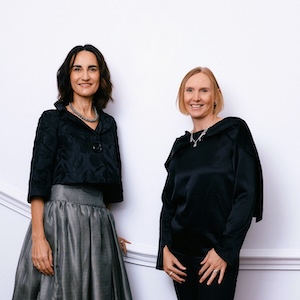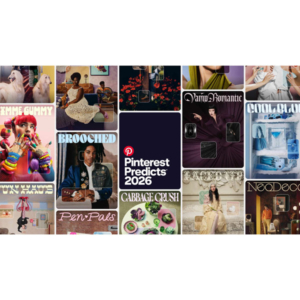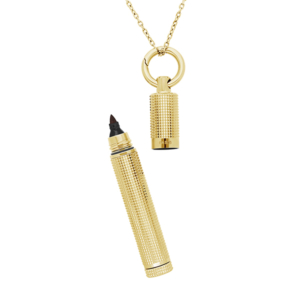
Jewelry sales appear to have fallen from the record-setting levels they hit during the COVID-19 pandemic, as consumers are spending again on travel and experiences, panelists agreed at an April 25 seminar at the American Gem Society (AGS) Conclave in Oklahoma City.
The session was titled “Expert Insights, Industry Market Outlook, and Business Opportunities to Finish 2022 Strong” and was moderated by the writer of this article.
Erich Jacobs, CEO of Jewelers Board of Trade (JBT), said he’d seen “some downward trends” for the industry—including fewer Google searches for jewelry and an increase in JBT collections—but wasn’t sure that they signal an eventual decline.
“It’s too soon to tell,” he said. “But it does seem like we’ve hit peak jewelry.”
He noted that for the last two years, “we saw a consistent improvement in the metrics that we track.”
The reason is obvious, he said: “You had $11 billion in travel dollars that weren’t being spent. That’s a lot of money that went into this industry. [People said:] ‘Instead of a trip this year, let’s get a diamond ring.’ That’s going away.”
John Carter, CEO of Jack Lewis Jewelers in Bloomington, Ill., agreed that “everyone would say that [the last year was] their strongest year of all time, strongest year on record…but it’s like we were dropped out of a helicopter onto third base and we all want to brag that we got a triple. The decline in travel dollars put us in that situation.”
Carter admitted that the return of travel might pose a problem but added that people often overlook that the jewelry market has expanded.
“We’ve all seen an influx of new customers that had not previously considered jewelry as an option,” he said. “They just always considered trips, because that’s what they’ve always done. As we all know, there’s an allure to a five carat diamond, or a big pair of studs. That is a really difficult feeling to replicate. There is now a deeper pool of customers than there was before.”
The pandemic also made the “slow-to-adapt” jewelry industry up its game digitally, Carter said.
“In April and May of 2020, when our businesses were closed, what did we all do? We all adapted. Some of us redid our website. We did social media differently. We figured out how to Facebook Live and video chat. And other companies came up with great services, like virtual meetings and payment processing, that we weren’t using before.”
Carter remembered a “sobering moment” when he was sitting alone with his marketing person in his closed store at the beginning of the pandemic.
“He said, ‘What do you want out of your website?’ I said, ‘I want my staff to have opportunities to be in front of people.’ So everything on my website points to appointments with my people. Click here to contact us. Click here for directions. So we’ll get 50 to 100 appointments a month, just from the website, and 50 live chats a day.”
He also put out a series of videos in which he was interviewed.
“[The marketing director] will ask me about Reddit threads. And one of my favorite ones was, ‘Are diamonds just a big scam?’ And he and I had a 40-minute conversation on are diamonds just a big scam, because it’s a genuine viewpoint that many have.… And when you have a conversation like that, [viewers] can see that you are addressing these things, and that helps to solidify your relationship.”
Jacobs added that retailers “that have embraced new technologies have accelerated much faster than those who have not. A standard mom-and-pop brick-and-mortar has generally been left behind. Those that have embraced omnichannel are doing a lot better than those that have not.”
When asked about future opportunities, Mark Hanna, chief marketing officer of Richline Group, pointed to lab-grown diamonds.
“For us, it’s about choice. We were able to focus certain collections [on it]. We have not grown lab-grown in terms of a complete category. We have grown it in terms of specific types of products with specific names.”
Carter, however, is staying away from lab-grown, for now.
“I’ve never been the person who says, ‘I’ll never do anything.’ [Lab-grown] has challenged me to stagger my natural inventory in a way that my clients don’t have to consider laboratory-grown diamonds. Will it be here for the long haul? Yes. It probably will. But when the price gets down to where it should be—$600 or $800 a carat—that will not be competition for the guy who comes in and wants a two-carat engagement ring.”
In terms of future challenges, Hanna warned the industry to be cautious with how much it raises prices, even though the cost of gold and diamonds has increased.
“I ask people to be a little bit careful with examining what the right price is,” he said. “Everything we are doing, we have to look at our costs. And you have to do the same thing. We are in an inflationary cycle, we have higher prices for our metals, and a competitive labor force—all these things add up.”
Carter called Russian diamonds “probably the biggest elephant in the room. In the last couple of weeks, that’s on top of mind of every retailer, especially the rising diamond prices that will cause.”
He advised retailers to tell their vendors not to supply Russian diamonds, using forms developed by groups like AGS. But he also said the Russian diamond issue presented an opportunity.
“What is one logical way around the supply chain issue of one-third of the world’s diamonds being taken off the market? Might be time to double down and buy some extra things off the street.”
He also hoped screening out Russian goods will “bring our industry more toward blockchain [tracking] that we were already on the trajectory to do, and should have been doing anyway. It’s going to speed that up.”
Jacobs said another challenge is “the increasing threat of bad actors in the industry. In this social media world, that is becoming a lot more public.”
Hanna believed the jewelry industry needs to show “constant innovation” and become “more sustainable.”
(Photo: Getty Images)
- Subscribe to the JCK News Daily
- Subscribe to the JCK Special Report
- Follow JCK on Instagram: @jckmagazine
- Follow JCK on X: @jckmagazine
- Follow JCK on Facebook: @jckmagazine







